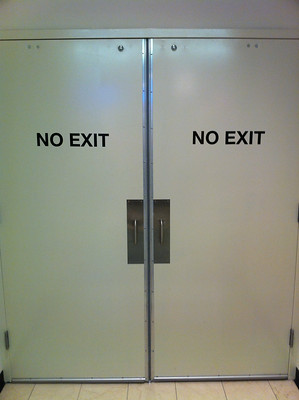Yesterday, I wrote about a fitness center (actually two) that the College of San Mateo built with bond funding. The issue for San Mateo voters is that a fitness center was never on the list of projects they agreed to finance. The fitness center was part of a laundry list of run-of-the-mill project’s voters would expect from a community college. It included upgrading facilities for high-demand jobs; making buildings handicap-accessible, improving earthquake resistance; modernizing building, etc.
The voters went for it, and the community college proceeded to build not one but two fitness centers on two campuses. One fitness center has been operational for about a decade. The other is coming online soon. The fitness centers sell memberships to the public. While some portions of the building have academic purposes, the fitness center takes up one-third of the building. It also provides paid-for parking for the members (only).
Not surprisingly, the Trustees – several of whom are new to the Board – cannot see the monetary or academic value in operating a fitness center. In their view, the fitness center does not support the mission of the college. They would like to eliminate the third-party operator and run the fitness center directly and for the students’ benefit. Other Board members and college administrators want to continue operating the center as a revenue generator. The trouble, of course, is that it doesn’t generate much revenue ($1M) in the context of the school’s budget ($207.5M). As my friend from Atlanta says, “The juice ain’t worth the squeeze.”
The taxpayers who voted for the $468M bond aren’t happy about the situation. That explains why the College of San Mateo has new Board members.
WCC’s Fitness Center
WCC also built a fitness center that they didn’t tell the voters about. But then again, the Trustees didn’t ask the voters (directly) to pay for it. Instead, they skimmed money off of the top of the district’s operating millages to guarantee the building’s $17M debt. The building was supposed to pay for itself, which it hasn’t done.
Over the years, the building, which was cheaply built, has experienced enormous wear-and-tear. This is, in part, because it was cheaply built. It’s also because WCC’s strategy for making the facility self-supporting was to heavily over-subscribe it. But even this doesn’t pay all the facility’s bills. There is no dedicated property tax to pay off the debt. The Administration has choices to make regarding how to pay off the remaining debt. They’re all bad.
First, it can raise user fees. The Health and Fitness Center – like most other gyms – has lost a large portion of its membership during the pandemic. The effect of raising the rates will be that some members will leave. It will produce the exact opposite result of the one that WCC needs.
Second, the WCC administration can continue to divert operating funds to a facility that was supposed to pay for itself. This robs the students and the community of the money we provide for WCC’s operations. (Debt is not an operational expense.) It’s also counter to the purpose of the building, which is to generate revenue for the College.
Other approaches to fixing the Fitness Center problem
The WCC administration can try to drive membership up. To support the club, WCC will have to increase membership beyond what it had been prior to the pandemic. That may mean running the facility 24 hours a day. If the HFC is typical of the industry, the members won’t be coming back in great numbers anytime soon. WCC cannot enact this solution fast enough to be successful.
Fourth, the WCC administration can raise tuition to cover the cost of its poor decision-making. This is the standard approach to covering the bond debts the school incurs when it borrows against the General Fund. Students have suffered significant tuition increases every time the Board has issued revenue-backed bonds. Now that it is painfully clear that the Health and Fitness Center cannot pay for itself, tuition hikes are all but certain.
Fifth, the WCC administration could also refinance the bonds and roll them into the new debt issues it plans to sell. The new debt issues will pay for the “Advanced Transportation Center,” and the SC renovation. A large portion of the bill for the SC renovation consists of the building’s maintenance deficit. The WCC administration has ignored maintenance for years and failed to conduct “capital refreshes” which are standard for commercial buildings. The result is an enormous bill to correct fundamental problems with the building. Unfortunately, this approach also guarantees hefty tuition increases for current and future students.
Sixth, the WCC Administration can create a fitness requirement for graduation. In doing so, they can force students to pay for Fitness Center services, thereby raising building revenues. They could also start charging a rec center fee for all students if/when they abandon the private health club initiative.
Why this matters
The Health and Fitness Center was a screwball idea that the Trustees signed off on. It was never for the benefit of the students. At no time did they evaluate the plan’s risk to the community or the students. The Administration does not have a plan to make the operation solvent, nor do they have an exit strategy. This was all just supposed to work.
Well, it’s not working.
Photo Credit: Steve Rhode , via Flickr





































